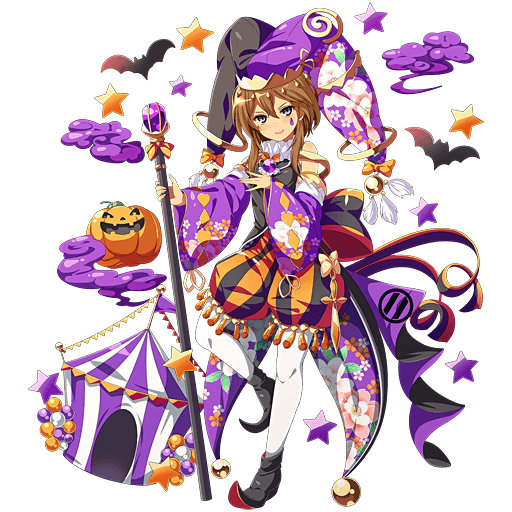#ashikaga yoshiaki
Photo
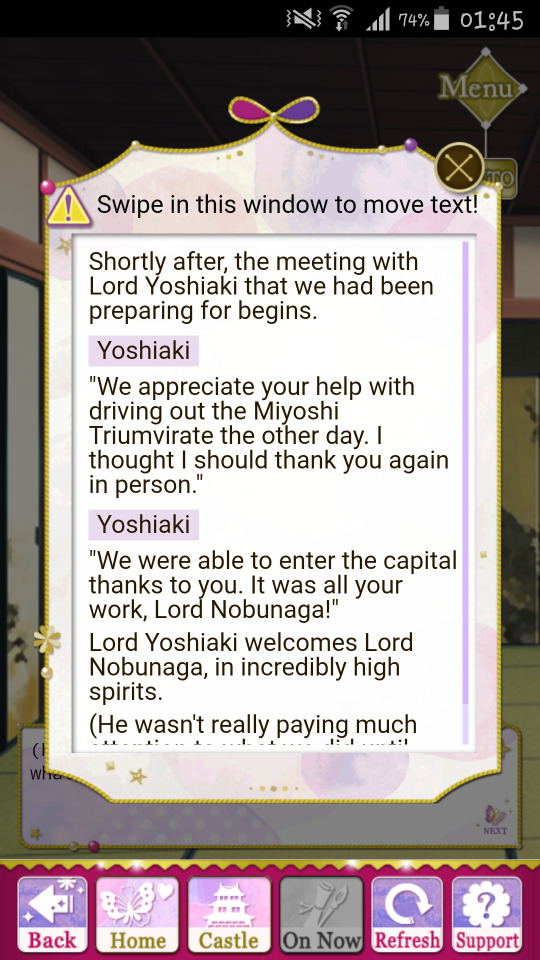
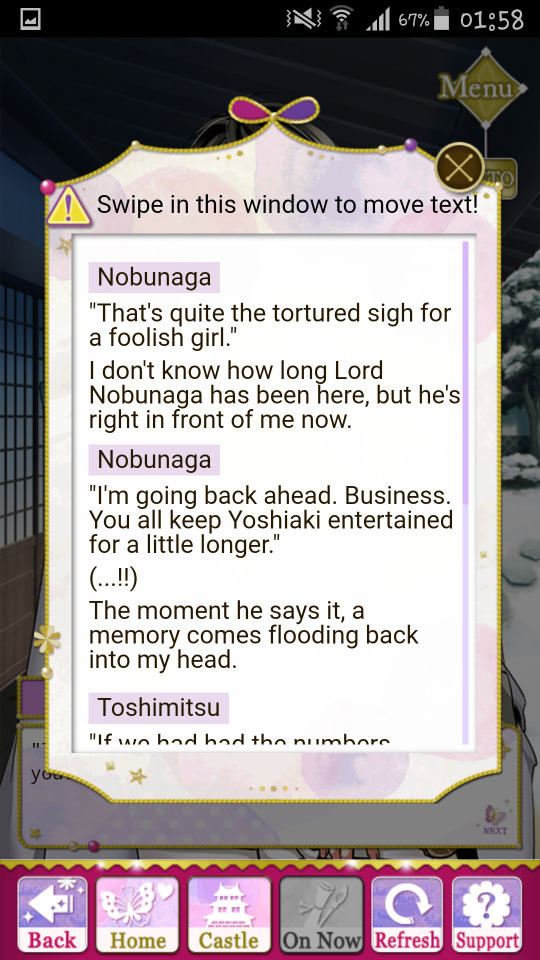

This was one of the few events in the “redo the past” event that actually has a historical basis.
The original incident takes place in 1569. A few months prior, in 1568, Nobunaga had agreed to become Yoshiaki’s sponsor and escorted him to the capital to take up the title of shogun. Nobunaga had gone back home to Gifu for the time being, when Honkokuji was attacked by the Miyoshi. It’s mostly similar to how it went in the game.
The difference being that in reality, Nobunaga actually had made it back home. He just then rushed back to Kyoto at a miraculous speed, despite unfortunate stuff happening on the road. There was not only snow that caused attendants to fall ill to frostbite, but there’s also apparently traffic jam caused by traders having an argument, and blocking the road for a good long while. Nobunaga made them shut up and leave, and made it to Kyoto in time to save the shogun and his defenders. The text says normally the trip would take 3 days, but Nobunaga made it there in just 2.
Recent studies suggest that at this point in time, Mitsuhide is actually not Nobunaga’s vassal. He’s there as part of the shogun’s personal retinue, and the Nobunaga biography Shinchoukouki even listed him as one of the “shogun’s men”. When and why the transfer of allegiance happened is still being investigated. Some researchers think that even when Enryakuji was burned and Nobunaga begin making moves to fight Asakura, Mitsuhide was still a shogun associate.
15 notes
·
View notes
Text
Rie Vs IkeSen MC to Yoshiaki
Yoshiaki: *Doing his daily thing in life by being an ass hole + disrespect and look down on woman*
Ikesen MC: Y-You shark face! Waaaaa QAQQQQQ
Meanwhile, Rie:
You DARE to say that again you wasted piece of sperm! I'm so gonna cut your kuku and make a pie out of it and serve it to your *beep* vassals you *beep* BISH! *Lifts up table* \(OAO)/
Someone has to stop her 👆.
Alas, everyone, my oc, Rie, the crybaby yet a savage woman.
#ikemen sengoku#ikemen sengoku imagines#ikemen sengoku mc#ikemen sengoku oc rie#ikemen Sengoku yoshiaki ashikaga
15 notes
·
View notes
Photo
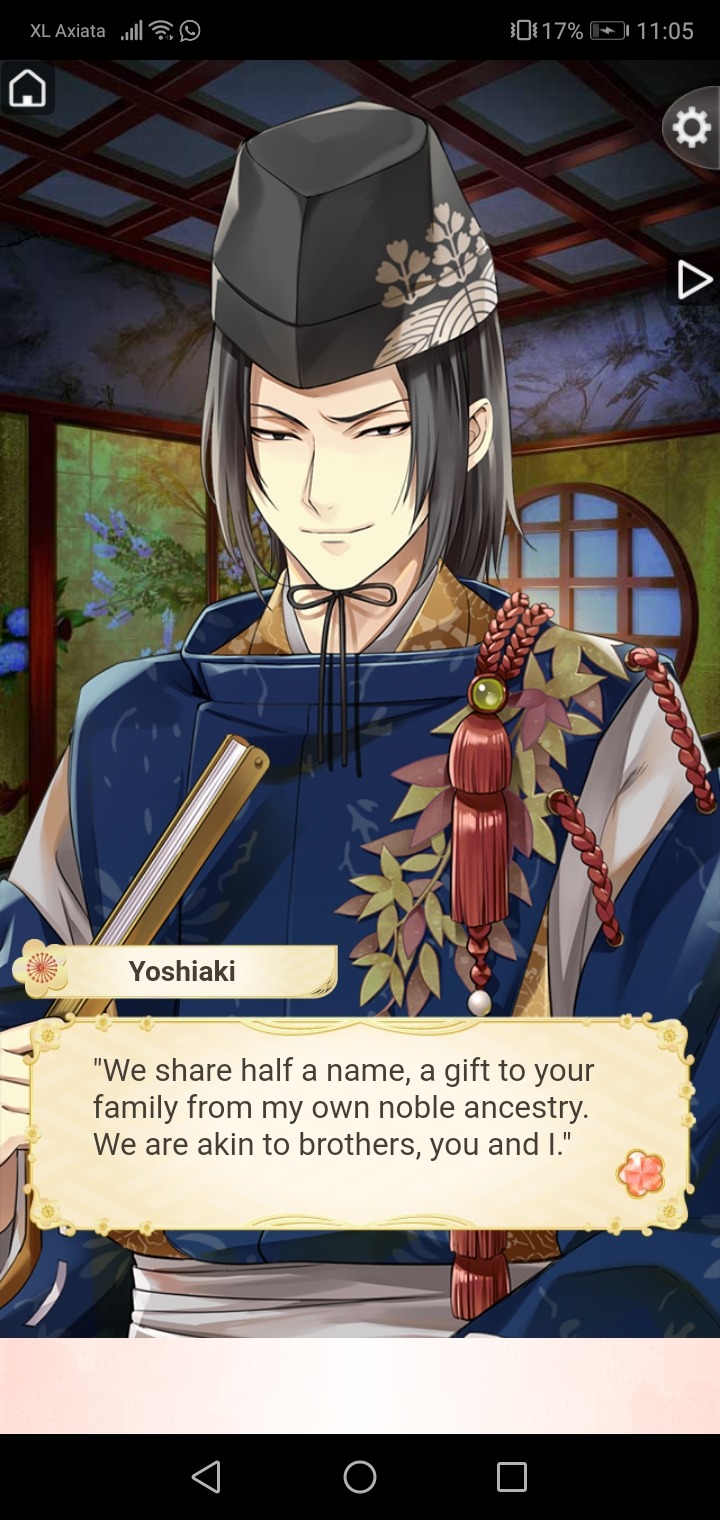
They mean the “Yoshi” 義 part. “Righteousness”. It’s the familial name of the shogun family, and nobody can use that word as a name unless the shogun permits it. So if you see someone whose name has this Yoshi 義 in it, they have been bestowed that by the shoguns. For example, Mogami Yoshiaki (Masa’s uncle), some people in the Shimadzu family (Yoshihiro, Yoshihisa), etc.
Yoshimoto got his name by the grant of Yoshiaki’s father, Ashikaga Yoshiharu.
Hideyoshi’s Yoshi 吉 is different LOL.
The Imagawa is not just some high ranking family who contributed to the shogunate family. Their ancestor was actually originally one of the Ashikaga. They “broke off” and established a new surname pre-Ashikaga shogunate days, though. Still, Yoshiaki and Yoshimoto were very very very distantly related. I don’t think that was supposed to be a thing here in Ikesen, since all they talk about is the name. I mean the history IRL.
Because of the Imagawa’s close ties with the shogun, they were granted the “Yakata” status. Only shogunate-approved family can have the “Yakata” status, and their clan lord allowed to be called “Oyakata-sama”. Otherwise, you’re not supposed to do that.
Calling Yoshimoto “Oyakatasama” = Yes
Calling Shingen “Oyakatasama” = Yes, the Takeda also has the “Yakata” status
Calling Nobunaga “Oyakatasama” = NO
(they have the minions call Nobu “oyakatasama” in anime and games a lot, but they’re lying to you IDK, maybe it just sounds cooler than “tono-sama”)
26 notes
·
View notes
Text
Was Nobunaga actually already the “shogun” without having the “Sei’i Taishougun” title?
This was a theory that I found while trying to study the bureaucratic protocols and norms of the Sengoku. It suggested that Nobunaga’s reign did too have the approval from the imperial court, and he didn’t need to take over the “Sei’i Taishougun” title from shogun Yoshiaki.
After ousting Yoshiaki, Nobunaga was awarded the titles Dainagon (Major counselor) and Ukonoe no Daishou (General of the Right, also sometimes shortened as simply “Udaishou”). These are titles that the shogun traditionally also held, as the “Sei’i Taishougun” title is something of a unique title that is separate from the imperial hierarchy. Upon these appointment, Nobunaga was allowed to be addressed by the honourific address that usually only the shogun has: ue-sama.
Some people thought that this means the imperial court has acknowledged that Yoshiaki’s authority is over, and Nobunaga is in charge now, even though he does not have the “Sei’i Taishogun” position at this point.
The logic for that theory was that in that time period, the Udaishou was the highest imperial office that someone of the samurai class could have, hence the tradition of having the shogun also hold that post. The higher ranking Sakonoe no Daishou/Sadaishou post, the General of the Left, was traditionally held by the noble houses.
Shogun Yoshiaki and his brother Yoshiteru before him did not have Dainagon and Udaishou titles, and the last Ashikaga shogun to also have the aforementioned titles was their father Yoshiharu. Yoshiaki and Yoshiteru’s official court title was only up to the Sakonoe no Chuujou (Lieutenant-General of the Left), one rank under the Taishou.
Because in the imperial hierarchy Nobunaga’s Udaishou post outranks Yoshiaki’s Sakonoe no Chuujou, the theory posits that he is already acknowledged by the imperial court as the new ruler replacing Yoshiaki. That is, he is the “new shogun” (i.e the samurai ruler of the land), even though he does not actually have the literal “shogun” title.
What will change if this theory turns out to be true?
For one, it further confirms the idea that Nobunaga is not as wildly "out there” as most people thought he was. He still operated within the standard norms of the time period and adhered to the established traditions, and didn’t just smash his way through the court and government without regard to the customs.
Also, if this theory is true, it would debunk all the Honnouji conspiracies that involve any variation of “the imperial court feared Nobunaga’s power/ambition”. If Nobunaga ruled with the approval of the imperial court, then all that backstage plotting makes no sense.
And the last thing is that this theory being true would also further lend credibility to the other theory saying that Nobunaga wished to return the power to the emperor and do away with the concept of a “shogunate rule”. After all, the specialty-designation “shogun” title was the very proof of the samurai rule breaking away from and undermining the imperial court. Nobunaga choosing to not take the shogun post, and instead adhering to the “standard” imperial court ranks, was thought to be proof that he’s returning to the old imperial rule rather than following the path of the “samurai/shogunate rule”.
Of course this is just a theory, and it only spawns more theories and what-ifs. I still find this worthwhile to consider because I’m realising that I don’t actually know what the rules and norms of the government of that time period is like. Even though in practice the daimyou and other local rulers largely disregard the central government (the shogun and the emperor both), I do see proof that the various rites and protocols still has to be performed. It means that the bureaucracy still matters to some degree, and learning about how this whole system works is something that is necessary to properly understand the Sengoku environment.
#long post#essay#theory#oda nobunaga#court title#Japan#japanese history#imperial office#samurai#sengoku#Sengoku Era#Sengoku period#feudal japan#shogunate#Warring states#Warring States Period#Warring States Era
28 notes
·
View notes
Note
Hey Mrs. O hope you're well! I just have a question about IkeSen. Im a bit confused about whos in power. Like they talk about an Emporer, and a shogun, and daimyo's. Im confused how Nobunaga and the other lords fit in and who is in charge lol any clarification would be greatly appreciated
Hi Nonny! Thank you, I am peachy.
I don't blame you for being confused - Ikesen gives us an extremely watered down version of Japanese history and even that is confusing because Japanese history is heckin complicated! I'm no expert but I'll see if I can make things clearer for you.
In the time of Ikemen Sengoku it is the Sengoku period obviously (which roughly spans the 15th and 16th centuries) and more specifically 1582, which is the year Oda Nobunaga 'died'. However, we're dealing in a fictional version of things where stuff gets fudged a bit, so let's not get hung up on the exact dates. The structure of Japan at that time was still a feudal system divided into 5 basic levels that looked something like this:
Emperor > Shogun >> Daimyou >>> Samurai >>>> Peasants
The Emperor was nominally the most powerful person in Japan, a political figure of course, but most of all he is a spiritual figure. He's the leader of the Shinto religion and said to be descended from the sun goddess Amaterasu. The Emperor and his Imperial Court fulfilled many important ceremonial functions and was a place where the arts and culture were encouraged and maintained.
In truth though, the most powerful person in the sphere of day to day earthly life was the shogun, a military dictator that ruled over the country. (Incidentally, the first shogun to really consolidate power and create feudalism as it existed in Japan for 600+ years was Minamoto no Yoritomo - the poster boy for Ikemen Genjiden) The shogun ruled with the Emperor's blessing, whether that was freely given or manipulated, and if you really want to grossly oversimply an analogy I think you could somewhat liken it to the concept of the Pope and some monarchs in historical Europe - both powerful in different ways, and a monarch ostensibly ruled with the Pope's stamp of approval.
Below the shogun would be the daimyou, powerful land-owning lords who controlled personal armies of samurai loyal to them. This would include many of the warlords we know by name in the game - Oda Nobunaga, Takeda Shingen, Date Masamune, Uesugi Kenshin, Mouri Motonari, Imagawa Yoshimoto, and Toyotomi Hideyoshi (eventually) were all daimyou.
Samurai in service to the daimyous could include some illustrious warriors as well, and there are plenty of them that are suitors in Ikesen too - Akechi Mitsuhide, Ishida Mitsunari, Naoe Kanetsugu, Maeda Keiji, and Sanada Yukimura were all subordinates of the men above. (Though Yukimura's older brother, Nobuyuki, was a daimyou)
In the time of Ikemen Sengoku, we have the shogun (or ex-shogun, I suppose) Ashikaga Yoshiaki. It's Complicated, but suffice it to say that Nobunaga had helped him to power as a sort of puppet shogun and then removed him from it, and Yoshiaki did not take this very well. He became a rallying point for those looking to oppose Nobunaga's rise to power and hence his role as a villain in our story.
SO, technically, at the time of our story nobody really is in charge exactly, and that's half the problem. The Emperor exists offstage in Ikesen, and the Imperial Court is always a force that has to be taken into consideration, but Nobunaga is generally adept at maintaining a positive relationship with it. It isn't until after Nobunaga manages to bring almost half of the previously fractured provinces of Japan under his control, and the unification he begins is continued by Hideyoshi and ultimately solidified by Ieyasu, that a new shogun rises to power and maintains the Tokugawa shogunate for the next three centuries or so.
If you're interested in a brief rundown on the shogunate and how it worked, this video is really useful and entertaining for giving you a good grasp on the basics. And here's another from the same channel that gives a cool visual history of Japan, but I've linked the timestamp to the Sengoku period for you here. I hope that helped, rather than made things more confusing? I obviously didn't even touch on some of the other characters in the game or how Kennyo and the Ikkou-ikki opposed Nobunaga - if you have more questions about them, feel free to ask!
33 notes
·
View notes
Text
Dramatic vs. Romantic - Mitsuhide's Route Endings
So I recently finished playing Mitsuhide's route for the second time and I have a lot to say. The first time I played his route, I did the dramatic ending. This time, I did the romantic ending. And this is the first time I've ever done both endings for a character and holy shit- the differences.
Something that confused me is how the dramatic ending feels more.. tame compared to the romantic ending. I was always under the impression that the romantic ending is a sweeter end while the dramatic ending is the conflict continuing. But this seems to be the opposite for Mitsuhide and I'd really like to point this out.
Disclaimer: it has been six months since I completed Mitsuhide's dramatic ending so I am going off my memory for this. Also, there'll be discussion of topics relating to toxic or unhealthy relationships as well as attempted murder and drug overdose so if you're sensitive to that, then this isn't the post for you. There'll also be spoilers for Mitsuhide's route (obviously).
In Mitsuhide's dramatic ending, he teams up with Sasuke, Yukimura, Yoshimoto, and MC/Mai to go take down the Shogun, Yoshiaki Ashikaga. But things don't exactly go his way. The Shogun realizes just how important Mai is to Mitsuhide, and in an act of revenge, poisons her with an arrow. It's a slow acting poison that will undoubtedly kill her without proper treatment. By this time, Mitsuhide already knows that Sasuke and Mai are from the future, and so he asks Sasuke if the chances of saving her would increase if they were to return to the future. Sasuke says yes and so, Mitsuhide pleads with Sasuke to save Mai.
Mitsuhide chooses to let Mai go if it'll ensure her survival. He chooses to betray and let her go because he loves her. Of course, Mai lives and stays in the Sengoku and the Shogun is defeated. Mitsuhide realizes the Shogun has to have the antidote so he tricks the Shogun into thinking he's been poisoned as well, which causes the Shogun to unknowingly tell Mitsuhide the right dosage of medicine and the Shogun dies from overdose. The rest of the ending is literally just them spending time together and it's essentially slice of life then. I really like the dramatic ending. It stays true to Mitsuhide's character in my opinion and Mai didn't annoy me as much.
Side note: I really dislike the MCs in these games. Mai and Emma are the only ones I can tolerate. Alice is fucking annoying and Mitsuki (I think that's her name?) is so naive, it hurts. Mai and Emma can actually hold their own, but Mai is still naive in her own ways. Personally, Emma is my favorite. But Mitsuhide's romantic route seems to get rid of what little agency Mai had.
In Mitsuhide's romantic ending, it takes a more dramatic rather than sweet end. Mitsuhide chooses to team up with Motonari and Kennyo, and with some assistance from Sasuke, has the Oda and Uesugi-Takeda form a temporary alliance to distract the Shogun. But things take a turn for the worse. In this ending, Mitsuhide is more possessive and paranoid over Mai. He constantly wants her close and is terrified of being away from her or losing her. He literally threatens to cut off Motonari's hand if he touches her and then later, yells at Motonari and threatens to decapitate him if he even so much as gets close to Mai.
I hate to say it, but that is NOT healthy behavior! If your partner becomes so emotionally dependent to the point where they get so possessive and jealous and can't even bare the thought of you not being in their life, that's not good. To me, it feels as if Mitsuhide is not emotionally ready for a relationship in this ending, not after all he's been through. And rather than acknowledging how unhealthy his behavior is, Mai encourages it. It also feels like a complete 180 from his behavior in his route.
Throughout Mitsuhide's route, he remains calm and composed. Yes, he does express some jealousy such as when he pulls Mai away from Masamune. And he does write an entire fucking comedy to spite and insult someone who made Mai cry- But honestly, Yoshiaki deserved that, let's be honest. And Mitsuhide is a bit rude towards Yoshimoto, but that's literally because Yoshimoto is the love rival and also has feelings for Mai. But besides that, Mitsuhide always shows a willingness to love Mai from the sidelines, and to let her go if it'll keep her safe and ensure she'll live. He acknowledges that he's not the safest man to be around. And this behavior continues in his dramatic end until he accepts her as his fiancée and that she won't let him let her go, so he decides to always love and protect her.
Why is it different in his romantic ending? Why is he more possessive, more paranoid about losing her? And why does Mai encourage this behavior? What changed? I may not have much experience with relationships seeing as my previous relationship ending was my fault and I came to realize that I am ace/aro, but I can recognize unhealthy behavior when I see it. Mitsuhide doing a total 180 with his behavior is weird. Mitsuhide literally panicking over losing Mai even though he'd been so willing to let her go before and literally threatening multiple people on her account is not healthy. It's not endearing. It's not cute. It's concerning.
Encouraging behavior like this is never a good idea and I can only see Mitsuhide getting worse in the long run unless he somehow realizes it himself. But with how Mai encourages it? I doubt it, severely. It's sweet how much he cares about Mai, but it's also concerning. Mitsuhide is a grown adult, being this emotionally dependent on a single person for his happiness isn't healthy. And Mai shouldn't be allowing herself to be so emotionally dependent on a man like this, not one who's willing to die with zero questions asked for the sake of his ideals or one who behaves like this. So no, it's not "sweet." It's a massive and bright red flag.
I'm not trying to say Mitsuhide is toxic or abusive. That's not what I'm implying at all. But, he does seem a bit yandere? Or like he has Obsessive Love Disorder. Something like that. It sort of reminds me of how Logan from The Obsession by Jesse Q. Sutanto behaves. Logan was obsessed with the story's heroine, Delilah, and he expressed his "love" through being sweet to her but distanced her from her friends and stalked her. He literally set up cameras outside her house and broke in a couple times, which gave him something to use as blackmail in order to get Delilah to date him. And Logan was confirmed to have Obsessive Love Disorder which was pretty fucking obvious with how he acted with his previous love, Sophia, and with Delilah. He became obsessed with this version of Delilah he created in his head.
Mitsuhide technically did stalk Mai by "observing" her and he snooped through her belongings to find something to blackmail her. Which that blackmail led to them being faux engaged, then later faux married. I know this was all done to keep her safe from Yoshiaki, but I'm not sure if that entirely excuses it.. There was just so many red flags that stood out to me throughout his romantic ending, I can't even with it. His main route is fine, there is some questionable content but it gets explained either later on in the route or in his POV stories. His dramatic ending is by far, one of my favorite endings and it's one of four dramatic ends I've done- The other three being Edgar Bright's, Chevalier Michel's and Vincent van Gogh's. (Edgar is a fucking idiot omfg-) Really, out of everything in his route, his romantic end is the only thing I have a problem with.
Mitsuhide is not a bad person. His romantic end just tells me that Mai is a fucking idiot and that he may not have been emotionally ready for a relationship. His dramatic end is better. I recommend it, it made me freak out a bit but more in a good way. His dramatic end was essentially "holy shit- what the fuck is even happening?? This is insane" compared to his romantic end being "..WHY ARE THERE SO MANY RED FLAGS???." Both ending pictures are so pretty though like- One thing I agree with Mai on, and that's how pretty Mitsuhide is with his white eyelashes.
I'd also like to say that I am well aware that this is a game from 2017, hopefully, CBYIRD has realized just how concerning and unhealthy this sort of behavior is. The reason it bothers me so badly is because I remember when I discovered this game and how impressionable I was at the time. And it makes me wonder, how would I have reacted to this sort of behavior back then, had Mitsuhide's route been released and I hadn't gotten bored and didn't touch the game for two years? I probably wouldn't have taken it very well and it worries me that other impressionable people may discover this and not realize the red flags.
Btw, for an example of how impressionable I was back then, I didn't realize how controlling and toxic Nobunaga's behavior was until three years later when I finally decided to try playing his route again. I got so pissed off that I quit and I haven't touched his route since. And Nobunaga is one of my least favorite ikesen characters. I have yet to find anything that would redeem him in my eyes.
If you took the time to read this long post, I appreciate it. I'd love to do something similar to this for all the other characters but it may be a bit difficult haha.. Some characters I may end up playing their routes three times, such as literally anyone from ikerev. Since most of those routes I completed back in 2020 or they were just so unremarkable in their ending that I can't remember.
#ikemen sengoku#ikemen series#ikesen#cybird ikemen#mitsuhide akechi#akechi mitsuhide#mai#ikesen mai#ikesen mitsuhide#cybird ikemen series
48 notes
·
View notes
Text
1582-Oda Nobunaga (織田信長 )
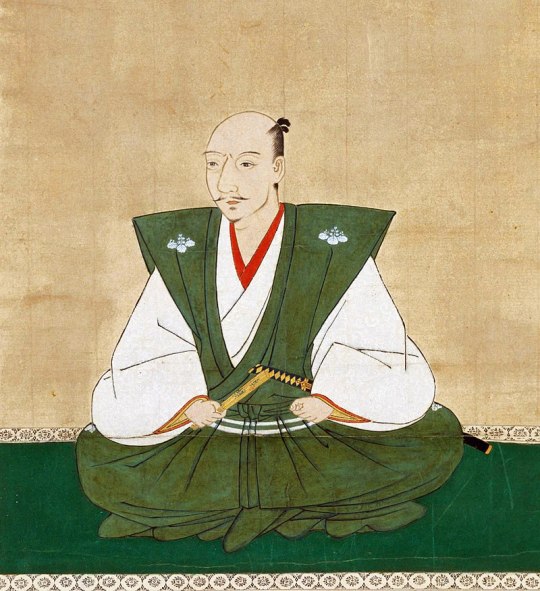
Oda Nobunaga (織田 信長, listen; 23 June 1534 – 21 June 1582) was a Japanese daimyō and one of the leading figures of the Sengoku period. He is regarded as the first "Great Unifier" of Japan.

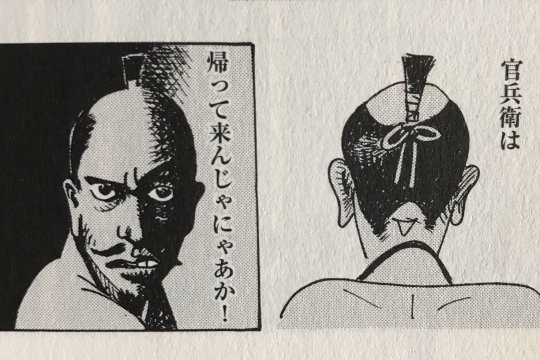
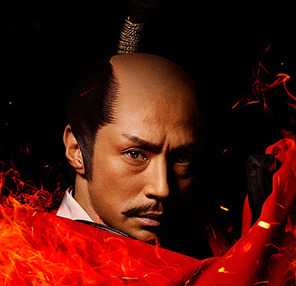

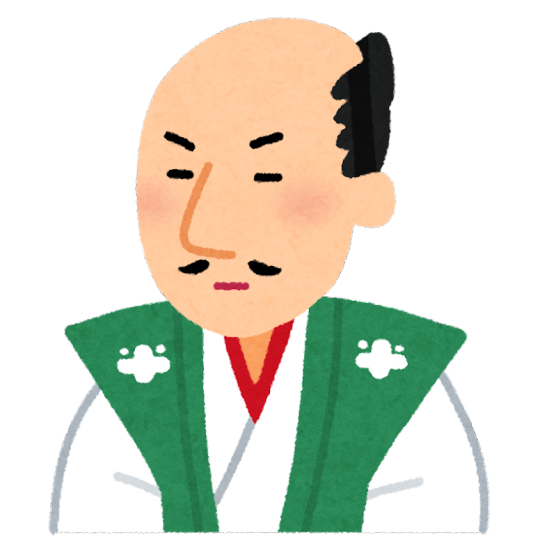
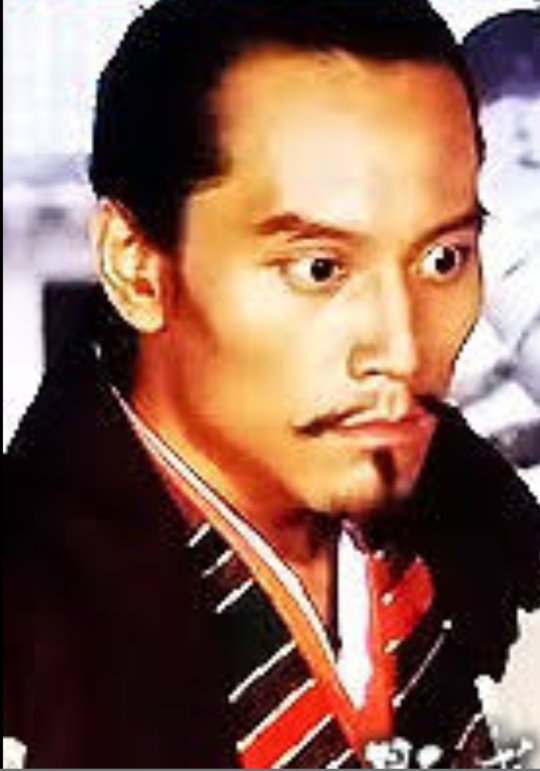
Nobunaga was head of the very powerful Oda clan and launched a war against other daimyō to unify Japan in the 1560s. Nobunaga emerged as the most powerful daimyō, overthrowing the nominally ruling shogun Ashikaga Yoshiaki and dissolving the Ashikaga Shogunate in 1573. He conquered most of Honshu island by 1580, and defeated the Ikkō-ikki rebels in the 1580s. Nobunaga's rule was noted for innovative military tactics, fostering of free trade, reforms of Japan's civil government, and the start of the Momoyama historical art period, but also for the brutal suppression of those who refused to cooperate or yield to his demands. Nobunaga was killed in the Honnō-ji Incident in 1582, when his retainer Akechi Mitsuhide ambushed him in Kyoto and forced him to commit seppuku.
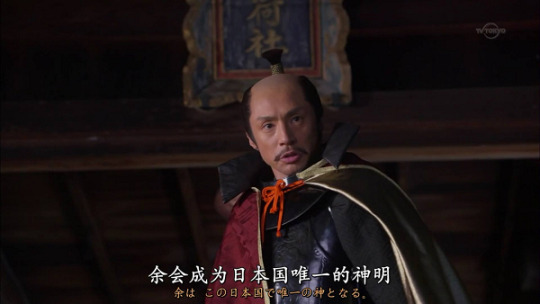
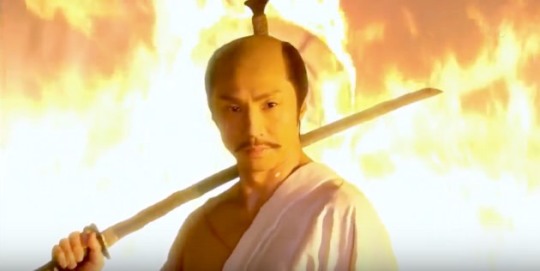

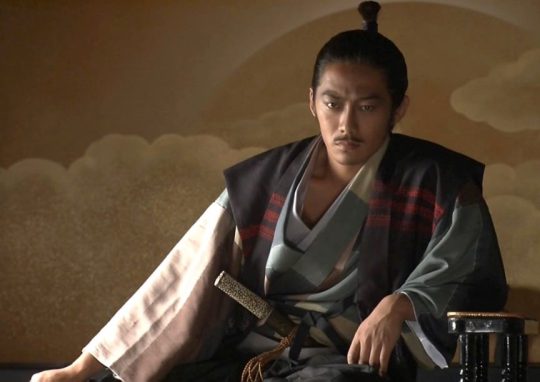


2 notes
·
View notes
Text


Photographs of the artefacts that the 1974 excavation of the old Nijō-castle in Kyoto has yielded: stone objects normally seen at cemetaries and religious sites were found to have been used for the construction of the wall of the castle. The discovery of these repurposed stone articles matches Portuguese missionary Luís Fróis' report on the manufacture of this palace.
Nijō-castle was built by Oda Nobunaga for his puppet shogun Ashikaga Yoshiaki. A palace that was estimated to take about four to five years to built under normal circumstances was completed in just seventy days. Nobunaga was said by Fróis to be continually present during the construction and that the use (and abuse) of images of the Buddha frightened the local populace.
#Oda Nobunaga#Sengoku Period#Japanese history#I might need to make another blog for history stuff#See Japonius Tyrannus by Jeroen Lamers page 62#And https://www.kyoto-arc.or.jp/News/s-kouza/kouza319.pdf#For source material#Ramblings
2 notes
·
View notes
Text
🌸 HISTORICAL NOTES - Akechi Mitsuhide(1528-1582)
As a disclaimer we do not know a lot about him and there is a lot of uncertainty when it comes to him,with that out of the way,i hope you enjoy my post.
He is said to have had been born in 1528(second the Akechi Gunki) and his parents are believed to be Akechi Mitsutsuna and a daughter of the Wakasa branch of the Takeda clan. His father died on the year 1538,leaving Mitsuhide under the guardianship of his uncle,Akechi Mitsuyasu.
In 1556; Saitō Yoshitatsu led a rebellion against his father and Mitsuhide's uncle,Saitō Dōsan. Mitsuhide supported Dōsan,however Dōsan lost and it led to Akechi Castle being attacked by Yoshitatsu. There are theories that say that Mitsuhide served Asakura Yoshikage for some time but i'm not so sure on how accurate those claims are.
Due to the Eiroku incident,that led to the murder of the shōgun Ashikaga Yoshiteru,his brother Ashikaga Yoshiaki fled to Wakasa province and got in contact with many powerful daimyō for support and particularly,Oda Nobunaga. Oda Nobunaga's invasion of Minō province caused Yoshiaki to lose his trust on him and for him to enter in contact with Asakura Yoshikage and led to him pleading with Yoshikage for him to march on the capital and get him proclaimed shōgun and this in turn led to Yoshiaki and Mitsuhide to get in contact.
Mitsuhide was said to have persuaded Yoshiaki to not rely on Yoshikage and to instead search for Oda Nobunaga's support after Yoshiaki's pleas for Yoshikage to march upon Kyoto went ignored. Due to Sagiyama-Dono(Nōhime or Saitō Kichō/Kochō,Saitō Dōsan’s daughter and Mitsuhide’s cousin on her maternal side) being Oda Nobunaga’s legal wife,it was easy for him to get into contact with Nobunaga.
With the agreement between Yoshiaki and Nobunaga settled,Mitsuhide joined service under the Oda clan. He joined the march to Kyoto and in 1569,defended Yoshiaki from a attack. At a point,started to work with Hashiba Hideyoshi,Niwa Nagahide and Nagakawa Shigemasa to serve as magistrates on Kyoto.
He split from Yoshiaki on 1573,and continued to serve Oda Nobunaga throught his campaigns. Now I’m sorry but doing research on everything he did is kinda overwhelming but just keep in mind he was a great player among the Oda forces and served in many of Oda’s battles and campaigns.
In 1581,Mitsuhide became extremely depressed after the death of his younger sister,Tsumaki(who was said to have been one of Oda’s consorts). This was said to have had contributed to Mitsuhide’s betrayal of Oda the following year.
In 1582,after receiving orders from Oda to support Hashiba Hideyoshi during his campaign against the Mōri,he informed his senior retainers of his intention to betray Nobunaga.
The following month after this,Mitsuhide launched a attack on Honnō-ji Temple that caused Nobunaga’s death by Seppuku and Oda Nobutada,Nobunaga’s oldest son and heir,was surrounded at Nijō castle by the Akechi clan’s forces and died there. Hideyoshi,unlike Mitsuhide’s prediction,quickly signed a peace treaty with the Mōri and rushed to fill the power vacuum. Mitsuhide struggled to keep the support of his troops and his forces of 13,000 soldiers dwindled to 10,000.
Hideyoshi,who had joint forces with both Niwa Nagahide and Ikeda Tsuneoki,was quick to attack him at the battle of Yamazaki with his forces of 20,000 soldiers. It is unknown how Mitsuhide died,but he was said to have had died at the hands of a bandit who attacked him while he fled after his loss at the battle in July 2 of 1582.
#❪🌸❫ Achilles’s notes#I actually am very proud of this!#I personally really like Mitsuhide and i find it fun to make my first post about him and my notes on him
8 notes
·
View notes
Photo



Rokuon-ji is more famously known as Kinkakuji (Golden Pavilion). You can see part of that golden-plated wall behind them.
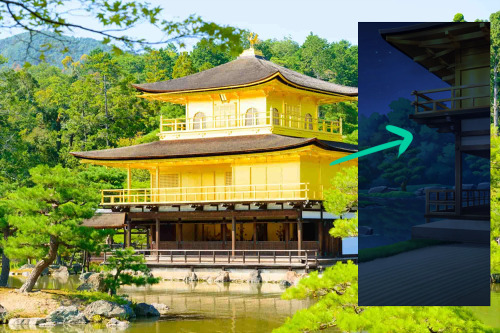
The game is right in calling the temple “Rokuon-ji”, because the nickname Kinkaku-ji did not come until later.
However, I’m not able to find any description how much gold was actually on this temple during the Sengoku. After Yoshimitsu died, the temple experienced many disasters and had to be rebuilt a few times. Even if Yoshimitsu had originally plated the whole thing in gold to show off his wealth, there’s no telling if it actually looks golden like that during the Sengoku. The current solid gold look was only done in the 1950s.
In the game scene Yoshimitsu, the third shogun, was being described in an oddly negative light for being a prickly snob. I’m not sure what’s this all about, because Yoshimitsu seems to be mostly considered a positive symbol of prosperity and power (Ieyasu’s grandson, Iemitsu, supposedly took his name from Yoshimitsu in hopes that his reign would be just as prosperous).
It’s not wrong that Yoshimitsu is something of a nitpick. He demands strict punctuality (people who came in late to events can and will be kicked out), and regulates a dress code for the vassals. However, his “arrogance” was actually considered a positive assertion of power that was necessary for the time, because shogun Yoshimitsu ruled in the time of the North and South Court. It’s a messy situation where the imperial court split into two, and there were two emperors enthroned in two palaces, who are both claiming the other one is not legitimate. Yoshimitsu then rose up to become a successful ruler, and even received the acknowledgement of “the true ruler of Japan” from the Ming imperial court.
It’s similar to how the game constantly portrays Nobunaga’s “viciousness” as “necessary evil”, and his success in being a “conqueror” was seen as something that was good for the nation.
Perhaps the writer saw that some officials at the time had accused Yoshimitsu for being biased towards those who are in power, and not so kind towards the “weak”, so they latched on that and created an image of an unwise or even corrupt shogun. (I personally withhold judgement for now, because of lack of context or details.)
They contrasted Yoshimitsu to the eighth shogun Yoshimasa, who was the one who built the much more humble-looking Ginkakuji (Silver Pavilion). Yoshimasa was the shogun who reigned during and after the Onin War, when the shogunate more or less lost its power. Rather than being “kind”, some people viewed Yoshimasa’s mild personality as weakness, due to his lack of strength and authority compared to his predecessors.
Both Yoshimitsu and Yoshimasa were men of culture, but the difference is that Yoshimitsu represents glamour and glory, while Yoshimasa is somewhat more associated with humility. I guess the writer is aiming to highlight Kenshin’s gentleness by comparing him with Yoshimasa (which the writer described positively), but it looks more of a something based on and aimed for a modern perspective rather than something that was written to fit the time period of the setting.
#ashikaga yoshiaki#kinkakuji#kenshin route#unification route#slbp#samurai love ballad party#shogun#commentary
12 notes
·
View notes
Text
I redownload SW5 for giving it another chance. I played for one stage then uninstalled it. I really want to love the game but I can’t. This is my least favorite musou game. The artwork & the stages are beautiful. The OSTs are great. They cut so many characters (all my favs except Hanbei were cut). The story writing is a mess. The new depiction for returning characters makes them become boring or awful like they turned Kenshin into Kanetsugu 2.0 and Katsuie downgrade into Oichi’s bodyguard (except Yoshimoto, Hanzo, Nagamasa, Toshiie and Hanbei, and maybe Nō and Oichi). The new characters not interesting for me, not enough for making them into my favorite, like when Yoshitsugu & Kojūro when SW4 came out. Shikanosuke & surprisingly Mitsuki, are good addition. I’m alright with Toshimitsu & Sena. Yasuke has potentials but the developers wasted him. I wish we can see how Yasuke adjust with the Japanese cultures and trying to understand the Oda officers, especially Nobunaga so he can interacted well with them. I really don’t like Kazuuji & Sandayu. They should be erased from existence. Some of the playable “UNPC”s are fine like Asakura, Dosan and his son I forget his name. I’m happy they also bring back Katsuyori. Takakage’s brothers, Mitsubuchi, and the Okabe guy are not needed. I wish Yoshiaki Ashikaga were like evil Liu Shan, act innocent and weak, always put fake smile, but actually a great schemer and manipulator. They already cut so many characters but they also clone the movesets!? I understand DW9 have clones movesets because they have over 90 characters. But SW5 with less than 40 characters? This makes the game more boring.
I won’t touch SW5 anymore until they released SW5-II and Tsuneoki Ikeda & Yoshinari Mori become new characters, or they bring back Ranmaru, Gracia, Masayuki, Ujiyasu, Aya, Nene & Naotora (just erased her sumimasen gimmick please). I’m really sad I cannot love the game like SW1-SW4.
1 note
·
View note
Text
I still sometimes get annoyed to see people talk of the Sengoku by calling it Game of Thrones.
The Sengoku is not Game of Thrones. It’s only equivalent if the endgame goal of Game of Thrones is to kill the king and then reanimate his corpse to sit on the Iron Throne, while someone else runs the show. It’s not a fight to actually sit on the throne in the Sengoku, but I get that it’s a good clickbait to get clueless people to get invested in the subject I guess.
Like, during the “who’s who” era of the shogunate it’s a bunch of people fighting over who gets to puppeteer the shogun, and nobody wants to actually sit on the shogun’s seat. I haven’t found why, because I don’t really understand the deep politics behind it yet. I just know that it’s been like that for the last 3-4 Ashikaga shoguns before Yoshiaki finally gets thrown out altogether.
I kind of figured out why nobody ever tried to supplant the emperor, but as far as I know the shogun’s seat doesn’t really have the same taboos as the emperor’s throne do.
The saneiketsu era is something else entirely because all three of them seem to be after different things. I would say it throws out the Thrones comparison entirely.
Nobunaga’s end goal is mysterious, despite all that woo woo dramatics about “wanting to make peace”. It’s just fiction and all to make Nobunaga look good in novels and drama. Nobody knows what he wants. Not unless you believe Luis Frois, and we assume that the text we have today is not fabricated or a mistake.
Hideyoshi had the power, but avoided the shogun position. All that talk about “not being eligible due to his bloodline” is complete crock and bull and lies. Everyone knows Ieyasu bullshit his own Minamoto lineage. Hideyoshi could’ve either done the same or found some high class Minamoto clan to adopt him. He just didn’t, and instead picked a Fujiwara lineage to be adopted into for whatever reason. He finished the unification, he “got the throne”, but then went nuts and started dreaming of impossible foreign conquest.
Ieyasu reclaimed the shogunate, and was very successful, and this is probably why people thought that “this was the end goal the whole time”. Especially because a lot of erroneous Tokugawa-centric narrative like to say that he was the one who finished the unification. But he actually didn’t, he was just successful in grabbing the power and “resurrecting” the shogunate.
The only appropriate Game of Thrones comparison is really Sekigahara. The King is dead and someone new schemed to usurp the power, that’s it.
3 notes
·
View notes
Text
The Sengoku Christmas Truce
There is a strange story floating around on the internet that says something like this: “In 1567 or 1568, Nobunaga and Matsunaga Hisahide were locked in battle. However, on Christmas they agreed to have a truce, and their vassals attended a Mass led by Luis Frois.”
This was also repeated in some English articles, claiming that the commander leading the Oda army was Shibata Katsuie.
After looking into this, it looks like this might be a story that got distorted through “game of telephone”. The quote from Frois’s Historia that I can find mentions no names (perhaps he was not familiar with them), but Japanese experts identified this as something happening around 1565-1566, and was between Matsunaga and the Miyoshi clan.
I had originally thought that there were two Christmas incidents, but that’s not the case. In 1565-1566 Nobunaga is still tied up fighting the Saitou of Mino, and in 1567-1568 Nobunaga was cooperating with Matsunaga in supporting Ashikaga Yoshiaki’s ascension as shogun. Something got messed up somewhere, and I’m not even sure how the English-speaking writer got ahold of the wrong narrative. Perhaps it was an erroneous narrative from older English text such as James Murdoch’s Japanese History texts.
Translation from the Japanese translation (thus, take it with a grain of salt):
At the time of the Nativity, there were two armies which were hostile to each other in Sakai. There were a large number of Christian warriors among them. As it were, the Christians desired to show the pagans how close they were and how much they loved each other [as fellow believers]. Because the church was very small, they requested the people of the town to rent a large room, which was used by the locals as a meeting place. The room was decorated for the Nativity and the whole community gathered there on Holy Night.
Here they confessed their sins, celebrated Mass, heard the sermon, and those who were already baptized received the Eucharist. Among them were 70 warriors, who supported each other with great affection and courtesy, as if they were vassals of the same lord, even though they came from opposing troops. They brought many dishes from their own homes and invited one another, all in order, clean and marvelous.
The men who served them, the sons of these warriors, spent the whole afternoon talking about God and singing. The pagans of the city who came to see the altar and all its decorations were so numerous that they seemed ready to break down the doors to enter it.
Original Japanese, taken from a church flyer that quoted from the Japanese translation of Frois’s Historia:
降誕祭になった時、折から堺の市(まち)には敵 対する2つの軍勢がおり、その中には大勢のキリシ タンの武士たちが見受けられた。ところでキリシタ ン達は自分達がどれほど中が良く愛し合っているか を異教徒たちによりよくしめそうとして、司祭館は 非常に小さかったので、そこの町内の人々に、住民 が会合所に充てていた大広間を賃借りしたいともう しでた。その部屋は降誕祭にふさわしく飾られ、聖 夜には一同がそこに参集した。 そこでかれらは告白し、ミサに与かり、説教を聞 き、準備が出来ていた人々は聖体を拝領し正午には 一同は正装して戻ってきた。その中には70名の武 士がおり、互いに敵対する軍勢から来ていたにもか かわらず、あたかも同一の国守の家臣であるかのよ うに、お互いに大いなる愛情と礼節をもって応援し た。彼らは自分自身の家から多くの料理を持参させ て違いに招きあったが、すべては生前としており、 清潔であって、驚嘆に値した。その際給仕したのは、 それらの武士の子息で、デウスのことについて、よ き会話を交えたり、歌を歌ってその日の午後を通じ て過ごした。
The church staff who wrote this got it right, and even wrote a note: “Some people thought Nobunaga was involved somehow, but it was not so. It was actually Matsunaga and Miyoshi.”
#oda nobunaga#matsunaga hisahide#miyoshi triumvirate#luis frois#historia de japam#Christmas#Christianity#Sengoku Fake News
6 notes
·
View notes
Text
posting these here to store them

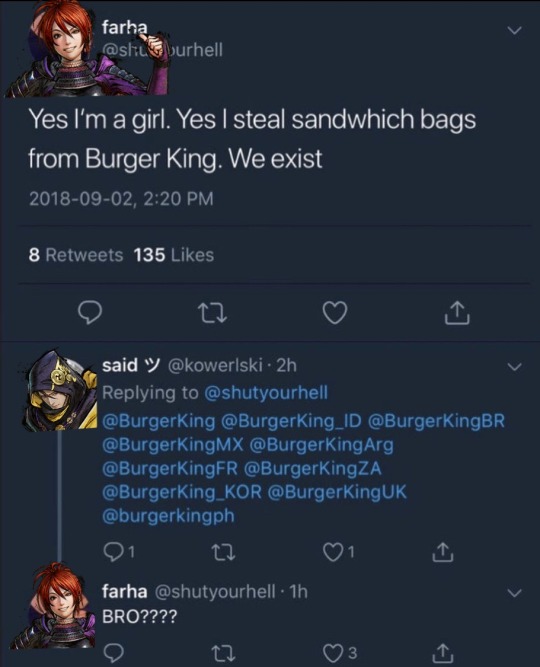

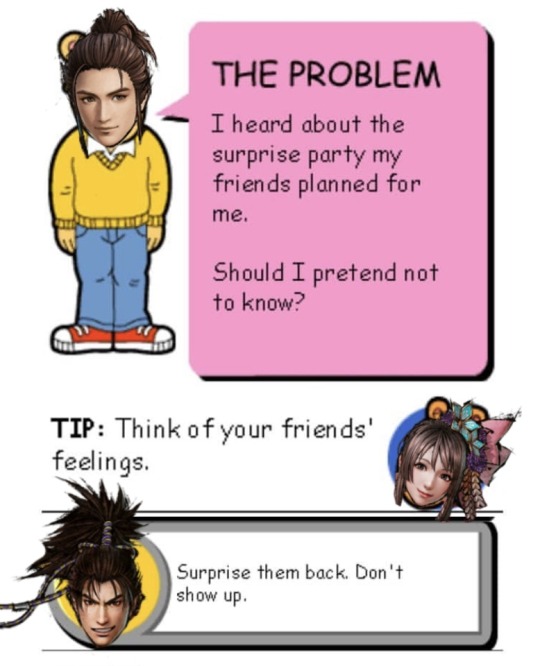

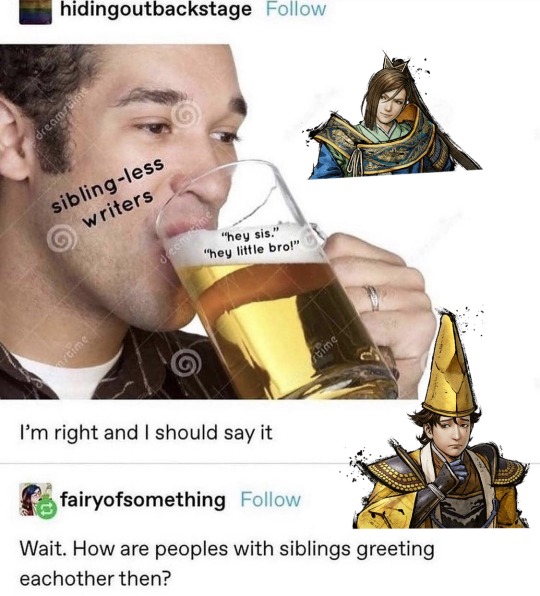
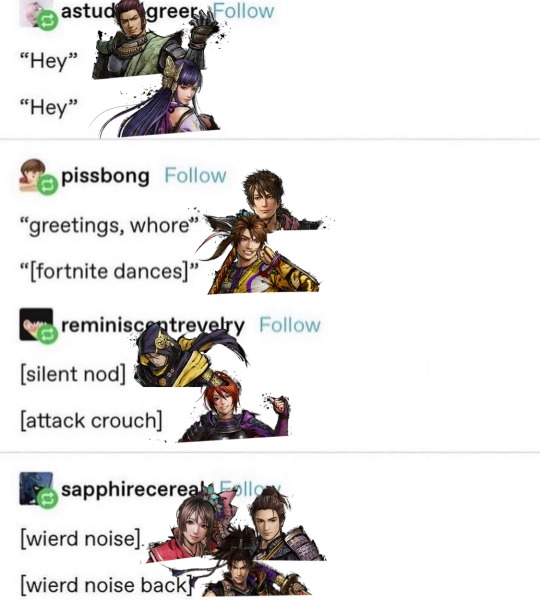
#unnamed friend.jpg#ik for the last one theyre not all siblings i just had to pick close friends lmao#this is so dumb#samurai warriors#samurai warriors 5#text post meme#aw shit i gotta tag ppl now#hashiba hideyoshi#toyotomi hideyoshi#mitsuki#momochi sandayu#kobayakawa takakage#oda nobunaga#oda nobuyuki#mori motonari#nakamura kazuuji#saito yoshitatsu#nohime#oichi#ashikaga yoshiaki#asakura yoshikage
71 notes
·
View notes
Photo

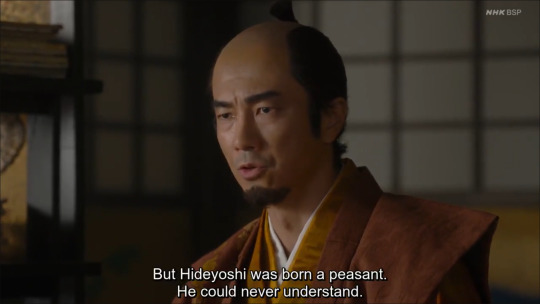
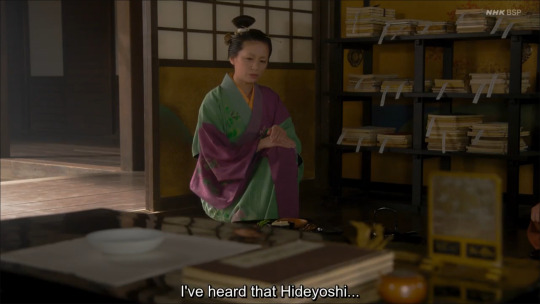
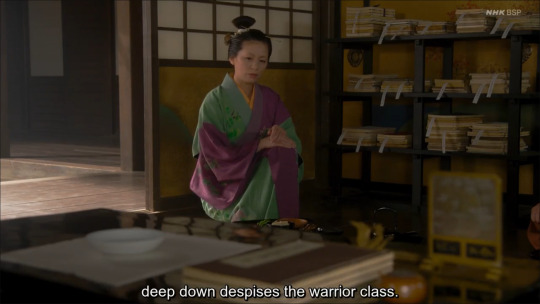

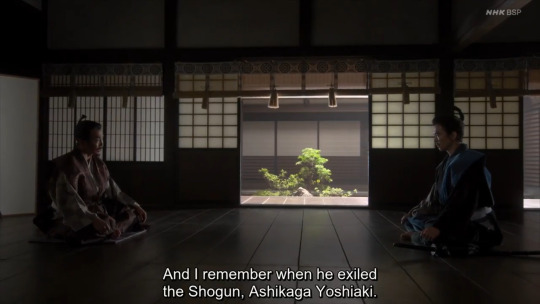
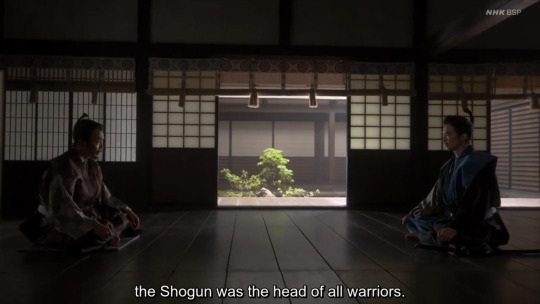
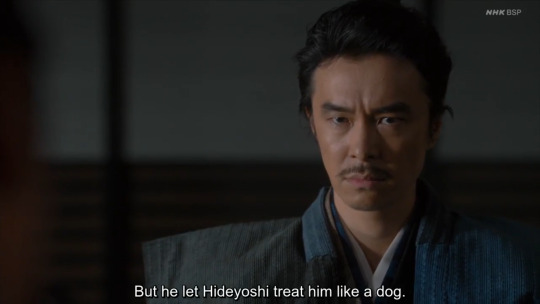
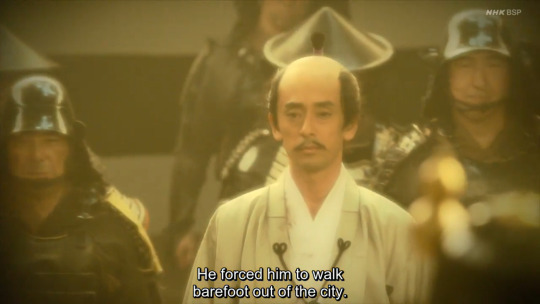
Awaiting Kirin Ep 42
The fact that Toyotomi Hideyoshi came from a peasant family make him more bitter and contempt towards the warrior class, both the Samurai and the Shogun. And so is eager to prove to others that he has the power to do what he wants with them and why he supported an upstart like Oda Nobunaga till the end, no matter how mad and greedy Oda was with power that he was willing to overthrow the Shogun and control the Emperor to rule the lands uninterrupted.
And the reason why Toyotomi Hideyoshi ordered the invasion of Korea, just to make a name for himself to show the world that a peasant born nobody like him can become a Shogun and conquer the Joseon (Korea) and Ming (China). Several clans disagreed with his decision to invade Korea, including Tokugawa Ieyasu who did not participate in the invasion. And surprisingly, most of the troops that invaded Korea wasn’t Samurai but foot “peasant” soldiers, Ashigaru.
(You can watch the short video history of the Samurai Invasion of Korea here).
That is why some considered what happened to Hideyoshi bloodline at the Siege of Osaka by Ieyasu as a curse for all the atrocities Hideyoshi did in Korea. And why Ieyasu wanted to kill Hideyoshi’s heir, Hideyori, because he doesn’t want a future uprising that will further lengthen the war to no end. And ultimately, it was Tokugawa Ieyasu that finally brought peace to the realm for many years. Having lived through the time of Oda and Hideyoshi, Ieyasu learns.
I guess Tokugawa Ieyasu is the one that actually fought for peace in the end, while Oda Nobunaga fought for power and Toyotomi Hideyoshi fought for glory.
#awaiting kirin#kirin ga kuru#mitsuhide akechi#hiroki hasegawa#taiga drama#japanese drama#japanese historical drama#j drama#toyotomi hideyoshi#shogun#samurai#ashikaga yoshiaki#oda nobunaga#tokugawa ieyasu#unifiers of japan#siege of osaka#samurai invasion of korea#imjin war#joseon dynasty#ming dynasty
15 notes
·
View notes
